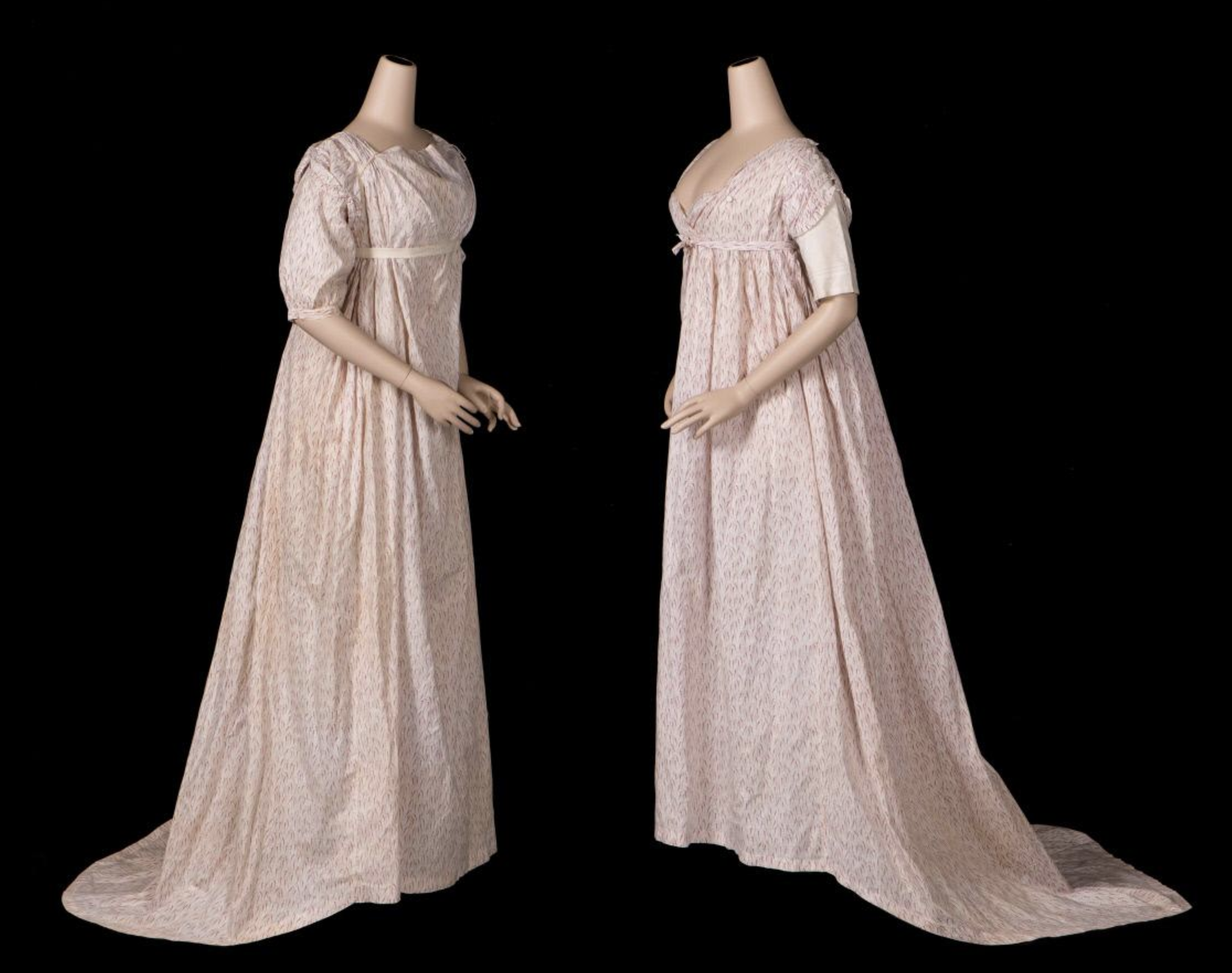I’ve always had a weakness for beautiful historic clothing with a story. I saw these two gowns last week; they’re new acquisitions to the Costume & Textile Collection of Colonial Williamsburg. While they’re not yet on display, Associate Curator Neal Hurst generously pulled them from storage to show to me.
And what a pair of beauties they are! They date to about 1796-1803, and are made of white cotton, block printed with a finely drawn purple-red scrolling grass (or wisteria?) pattern.
The raised waists, short sleeves, and soft, flowing skirts reflect the new fashion for classically inspired gowns that sought to mimic the dress of ancient Greece and Rome. One gown has a lower neckline, while the other has a more modest front panel. They’re deceptively simple in construction, with many beautiful little details like embroidered covered buttons and tiny, precise waist pleats, all stitched by hand. The now-forgotten mantua-maker who created them definitely knew what she was doing.
But there’s also a mystery to these two garments. The dresses are cut from the same fabric, in nearly the same size, and have remained together for over two hundred years. Their similar styles make them variations on a stylish theme. Did they belong to one woman who was so taken with the design of the printed cotton that she bought enough for two dresses? Was the cotton perhaps on sale, encouraging a thrifty purchase? (Bargain-hunting is hardly a modern invention.) Or did the gowns belong to a pair of sisters or close friends who shared the same taste, and chose to dress alike?
As a writer, I know that clothing can be one of the most interesting ways to describe a character. We’re all defined by what we wear, whether by choice or necessity. Clothing affects how we move, how we interact with others, and how in turn we are judged by them. In this era, cotton would still have been an imported luxury fabric, worn by women who were both stylish and affluent, and able to afford servants - whether free or enslaved - to wash and iron such delicate clothing.
While these particular gowns are believed to have been made in Great Britain, similar gowns were being worn in Federal-era America as well, where the classically-inspired style and simplicity would have been viewed as patriotic, a fashionable nod to the new country’s ideals. And yes, I can imagine my characters dressed like this: Eliza Schuyler Hamilton walking through the gardens at The Pastures in Albany with one of her sisters on a sunny summer afternoon, or young newlywed Theodosia Burr Alston, stepping from a carriage in a breezy cloud of white cotton in her new home of Charleston….
Many thanks to Neal Hurst for the behind-the-scenes tour!
Top photo courtesy of Colonial Williamsburg Foundation. All others Copyright 2019 by Susan Holloway Scott. For more photographs and information, visit the page for the dresses through the Colonial Williamsburg eMuseum.
Read my historical novels, I, Eliza Hamilton, and my latest book, The Secret Wife of Aaron Burr, now available everywhere in stores and online. Order here.



